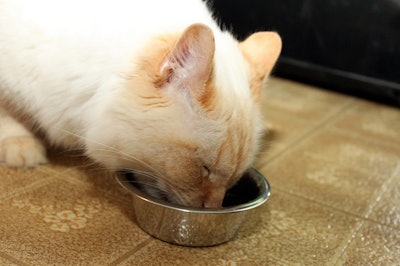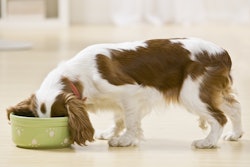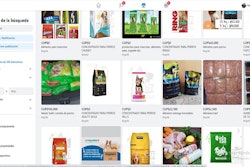
Adapted from a press release:
As per Future Market insights (FMI), the global market for cat food is anticipated to surpass a valuation of US$65.2 billion by 2031 in comparison to the valuation of US$40.78 billion registered in 2021, expanding at a CAGR of 4.8% over the forecast period 2021-2031.
The cat adoption rate is phenomenally increasing, especially on account of increasing pet humanization trends coupled with growing millennial population. Due to growth reported in the number of cat owners, the demand for nondiscretionary and discretionary products is on a rise, driving growth of the cat food market.
With more pet owners themselves taking on gluten-free, organic, or grain-free diets, owners become more conscious of their pets food – resulting in the search for an organic, healthy option.
Some of the leading manufacturers are focusing on introducing a wide variety of premium food products including, vegan, organic, and gluten-free variants to feed cats healthier meals. Other market players are also joining the bandwagon by launching innovative packaging solutions to gain competitiveness.
At SuperZoo 2021, new products showcased trends that continue to grow in pet food product development including functional ingredients, human-grade, high protein, health focus, grain-inclusive, sustainability, dried raw and alternative proteins.
Among various types, wet cat food segment is gaining traction in the market due to its balanced flavor profile covering vitamins, and minerals. As per the study, it is expected to register a CAGR of around 5% over the forecast period 2021-2031.
With advancements in e-commerce, consumers are now transitioning towards online retailers for purchasing cat food products, which is spurring sales prospects. As per FMI, it is forecast to expand at a CAGR of 5.9%, reaching a valuation of US$8,939.4 million by the end of 2031.
Growth prospects are likely to remain positive in China driven by growing urbanization, widespread pet humanization trends and rise in pet ownership trends especially among younger generation. FMI has estimated that China will account for over 50.8% of East Asia sales in 2021.
"Increasing urbanization along with rising disposable income is contributing to the growth of the cat food market. Growing emphasis on pet humanization trends along with cultural trends are further spurring sales prospects. Besides these, leading market players are focusing on expanding their portfolio. Therefore, a slew of new plant-based products are being launched, which is expected to bode well for the market," said a FMI analyst.
From previous reporting on natural pet food
Compared to organic dog and cat food labels, natural pet food remains loosely legislated and regulated. Federally, natural pet food needs to avoid being false or misleading about what is meant by natural. Otherwise, only state regulations control what can be called natural pet food. For many states, that means following AAFCO guidance for natural pet food.
AAFCO’s definition doesn’t mean natural pet foods are necessarily safer or less processed than products that don’t bear a natural label. Likewise, it doesn’t require pet food to be 100 percent free of synthetic additives, since factory-made vitamins, minerals and other nutrients are allowed.
For natural pet food, Dzanis said the most common error is lack of or incorrect use of the "with added" disclaimer that much accompany natural claims when a pet food contains synthetic trace nutrients.


















